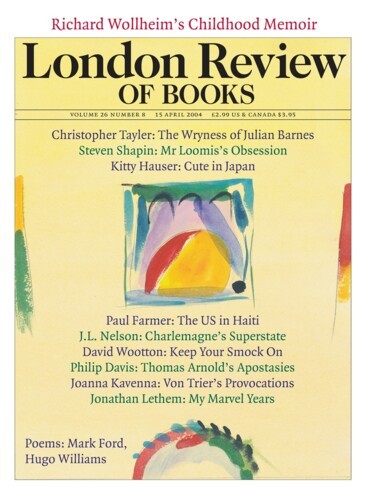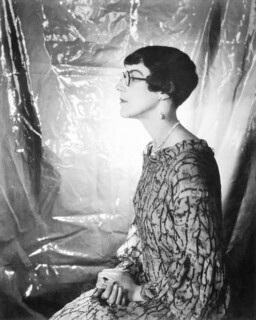The photographs of themselves that people like are only a fraction of those which exist. Ticks on contact sheets are outnumbered by angry crosses. As the number of images of the famous is huge, the approved picture is always under threat from the tide of those which are not. Faces, which are marketable pieces of personal property, are vulnerable. The more successful the projection of the desired version has been, the more newsworthy is the picture of a tear-stained cheek, tonsil-revealing laugh, a few new jowls, or just a glum glance. Defences uncalled for in the days of the painted portrait – dark glasses or a raised newspaper – may be thrown up. Privacy laws could change things, but for many years celebrities have fought attacks on the integrity of the image with yet more pictures of the approved kind.
Photographers who can produce them – who can make faces interesting and desirable – have theatrical skills. First as set and lighting designers, and then as directors – attentive, encouraging or challenging – who can persuade, bully or lull the subject into looking right at the moment the shutter clicks. All this turns the schedule of the portrait painter upside down. Photography compacts the painter’s hours of look-and-dab into a fraction of a second. The preliminaries are the arena of invention.
Some photographers use the control they have during a session to mark the image with their own style. Cecil Beaton, whose portrait photographs are on show at the National Portrait Gallery until 31 May, instead made images which show the style of his sitters – or at least find a suitable one for them. Beaton, who also drew and designed costumes, who loved dressing – others, himself, his house – and dressing up, chose styles rather than invented them. Photographers were, from the beginning, earnest or inadvertent imitators of painters. Beaton turned to Winterhalter for royalty in full fig, to Romney for pretty girls; Dalí gave a touch of modernity, Reynolds the kind of pose you needed for Churchill as war leader.
At the National Portrait Gallery there are a number of the scrapbooks into which Beaton stuck prints clipped from contact sheets. Names and places are written underneath: they record a social life as well as a professional one. From the wedding pictures of Edward and Mrs Simpson to stars in Hollywood hotel rooms, the impression you get is that he wasn’t so much a photographer – who after all is a functionary, a kind of servant – as a friend who happened to bring his Rolleiflex along. He seems to have been able to imagine how people would like to see themselves – or how he would want to look if he were them. The social butterfly was also a very hard worker. Perhaps it was because he put so much into self-promotion and self-presentation that he had such a fine instinct for the way others could look. His identification with beautiful people was profound.
Yet all these pictures together make a rather dull show. They are too kind to have the revealing rawness of snapshots, and the tension between photographer and subject which makes more aggressive photography compelling is missing. The face becomes an elegant mask, and very often a mask produced to a specification already developed, in paint or on film, by another artist.
What makes one go on looking at the selection from Tom Phillips’s collection of fifty thousand photographic postcards, also at the Portrait Gallery, until 20 June, is what Beaton was good at hiding: the heterogeneity of the unmasked human face. In the terms of this exhibition, a ‘photographic postcard’ is one printed directly onto photographic stock with a postcard back. They were made for the people they show, not for public sale, and were taken by local photographers – some in studios with props and painted back-cloths, some in the street, in homes, offices, schools and factories. The majority were made between 1900 and the late 1930s. Phillips has divided his collection into categories defined by significant items: prams, aspidistras, men in pairs in studios, office interiors and so on.
Even the minority which are captioned give no more than a photographer’s name and a date. You must make up your own stories and search the image for significant details – hints of personality, something to hang a narrative on. In this they are unlike iconographically similar photographs by recognised photographers. August Sander’s studies of Germans made in the 1920s and 1930s, for example, are self-justifying, they are to be explained in the way other works of art are explained. They are primarily pictures by Sander, not portraits of x or y.
Some of the postcards Phillips has collected, enlarged and displayed as works of art could hold their own in such company. But to do that would be to reduce the people in them to models, servants of the photographer. The title of the exhibition, We Are the People, is justified only if one forgets aesthetics, sees the subjects as in control. They are the ones you feel obliged to check out, one by one. Your eye even goes round group photographs – a classroom of children knitting, for example. On the whole it does so without assistance. A more sophisticated photographer might put the prize bull, the man leading it and the little girl holding her doll who sits on its back into a more imaginative conjunction. Here the bull is in profile – the pose a naive painter would use – the people full-face. This is imagery without art.
The best illustrated edition of Jane Austen uses contemporary fashion plates, engravings of carriages, town scenes and so on. Some of these postcards could be used, in a similar way, to illustrate stories by V.S. Pritchett. In the section ‘Workers: The Office’ there is a card in which the foreground is dominated by an open ledger, inkwells, a paste pot, a desk calendar and piles of papers. Beyond, young men turn from their places at long tables to look at the camera. In Pritchett’s stories young men like these are as likely to carry the plot as anyone else. The ordinariness of their position in life doesn’t shrink their personality, either in his fiction or these pictures.
Many of the illustrations in Maureen Waller’s London 1945 document everyday wartime experience.* People search through rubble, queue up for coal or to have their washing done, and sleep in Tube tunnels. There are pictures of Churchill at a window and Attlee on the hustings, but it is the anonymous characters you think about; the historical figures are already settled in your mind. The style of photography – the whole scene, not the close-up, the aftermath of the raid rather than the flames and falling buildings – was already old-fashioned. People like Capa had used 35mm cameras to take photographs which would become the iconic images of the war, and of the Spanish war before it. Run-of-the-mill news pictures, in which the photographer isn’t obliged to glamorise or to use the camera to do more than record evidence, are uninterpreted and democratic in the sense that no view of what is going on is privileged.
Looking at the postcards, even grouped as they are, doesn’t lead you to any general conclusions about life. We are all describable in terms of statistics. But take in the mysterious, amusing, sad, odd particularity of these pictures and you reach out, not for generalisations, but for stories: why did the young man want to be photographed outside the back door with his violin and an aspidistra?
Send Letters To:
The Editor
London Review of Books,
28 Little Russell Street
London, WC1A 2HN
letters@lrb.co.uk
Please include name, address, and a telephone number.


